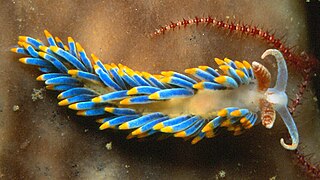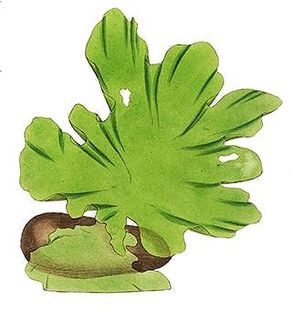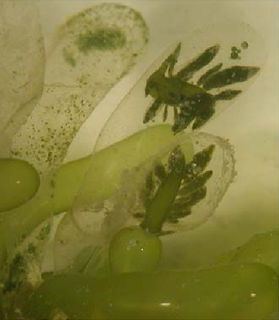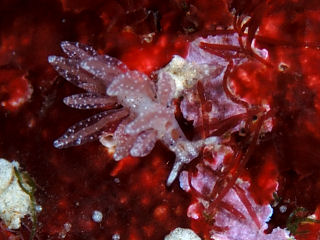
In evolutionary biology, mimicry is an evolved resemblance between an organism and another object, often an organism of another species. Mimicry may evolve between different species, or between individuals of the same species. Often, mimicry functions to protect a species from predators, making it an anti-predator adaptation. Mimicry evolves if a receiver perceives the similarity between a mimic and a model and as a result changes its behaviour in a way that provides a selective advantage to the mimic. The resemblances that evolve in mimicry can be visual, acoustic, chemical, tactile, or electric, or combinations of these sensory modalities. Mimicry may be to the advantage of both organisms that share a resemblance, in which case it is a form of mutualism; or mimicry can be to the detriment of one, making it parasitic or competitive. The evolutionary convergence between groups is driven by the selective action of a signal-receiver or dupe. Birds, for example, use sight to identify palatable insects and butterflies, whilst avoiding the noxious ones. Over time, palatable insects may evolve to resemble noxious ones, making them mimics and the noxious ones models. In the case of mutualism, sometimes both groups are referred to as "co-mimics". It is often thought that models must be more abundant than mimics, but this is not so. Mimicry may involve numerous species; many harmless species such as hoverflies are Batesian mimics of strongly defended species such as wasps, while many such well-defended species form Müllerian mimicry rings, all resembling each other. Mimicry between prey species and their predators often involves three or more species.

Nudibranchs are a group of soft-bodied, marine gastropod molluscs which shed their shells after their larval stage. They are noted for their often extraordinary colours and striking forms, and they have been given colourful nicknames to match, such as "clown," "marigold," "splendid," "dancer," "dragon," or "sea rabbit." Currently, about 3,000 valid species of nudibranchs are known.

Sacoglossa, commonly known as the sacoglossans or the "solar-powered sea slugs", are a superorder of small sea slugs and sea snails, marine gastropod mollusks that belong to the clade Heterobranchia. Sacoglossans live by ingesting the cellular contents of algae, hence they are sometimes called "sap-sucking sea slugs".

Haminoeoidea is a taxonomic superfamily of small sea snails or bubble shells, marine opisthobranch gastropod mollusks in the clade Cephalaspidea, the headshield slugs and bubble snails.

The sea lettuces comprise the genus Ulva, a group of edible green algae that is widely distributed along the coasts of the world's oceans. The type species within the genus Ulva is Ulva lactuca, lactuca being Latin for "lettuce". The genus also includes the species previously classified under the genus Enteromorpha, the former members of which are known under the common name green nori.

Caulerpa taxifolia is a species of green seaweed, an alga of the genus Caulerpa native to tropical waters of the Pacific Ocean, Indian Ocean, and Caribbean Sea. The species name taxifolia arises from the resemblance of its leaf-like fronds to those of the yew (Taxus).

Caulerpa is a genus of seaweeds in the family Caulerpaceae. They are unusual because they consist of only one cell with many nuclei, making them among the biggest single cells in the world. A species in the Mediterranean can have a stolon more than 3 metres (9.8 ft) long, with up to 200 fronds. This species can be invasive from time to time.

Caulerpa racemosa is a species of edible green alga, a seaweed in the family Caulerpaceae. It is commonly known as sea grapes and is found in many areas of shallow sea around the world. There are a number of different forms and varieties, and one that appeared in the Mediterranean Sea in 1990, which is giving cause for concern as an invasive species.

Limapontiidae is a taxonomic family of small to minute sacoglossan sea slugs. These are marine opisthobranch gastropod mollusks.

Stiliger is a genus of small and minute sacoglossan or sap-sucking sea slugs. They are marine gastropod mollusks in the family Limapontiidae.

Bryopsidales is an order of green algae, in the class Ulvophyceae.

Elysia crispata, common name the lettuce sea slug' or lettuce slug, is a large and colorful species of sea slug, a marine gastropod mollusk.

Emsleyan mimicry, also called Mertensian mimicry, describes an unusual type of mimicry where a deadly prey mimics a less dangerous species.

Limu, otherwise known as rimu or ʻimu is a general Polynesian term for edible plants living underwater, such as seaweed, or plants living near water, like algae. In Hawaii, there are approximately one hundred names for kinds of limu, sixty of which can be matched with scientific names. Hundreds of species or marine algae were once found in Hawaii. Many limu are edible, and used in the cuisine throughout most of Polynesia.

Caulerpa lentillifera is a species of bryopsidale green algae from coastal regions in the Indo-Pacific. This seaweed is one of the favored species of edible Caulerpa due to its soft and succulent texture. It is traditionally eaten in the cuisines of Southeast Asia, Oceania, and East Asia. It was first commercially cultivated in the Philippines in the 1950s, followed by Japan in 1986. Both countries remain the top consumers of C. lentillifera. Its cultivation has since spread to other countries, including Japan, Vietnam, Taiwan, and China. C. lentillifera, along with C. racemosa, are also known as sea grapes or green caviar in English.

Juliidae, common name the bivalved gastropods, is a family of minute sea snails, marine gastropod mollusks or micromollusks in the superfamily Oxynooidea, an opisthobranch group.
Oxynoe azuropunctata is a species of small sea snail or sea slug, a bubble snail, a marine gastropod mollusk in the family Oxynoidae.

Oxynoe panamensis is a species of small sea snail or sea slug, a bubble snail, a marine gastropod mollusk in the family Oxynoidae.

Caulerpa prolifera is a species of green alga, a seaweed in the family Caulerpaceae. It is the type species of the genus Caulerpa, the type location being Alexandria, Egypt. It grows rapidly and forms a dense mass of vegetation on shallow sandy areas of the sea.

Caulerpa cupressoides, commonly known as cactus tree alga, is a species of seaweed in the Caulerpaceae family. Green alge of Caulerpa genus are salty and pungent in style and are consumed by several marine cultures around the world.



















